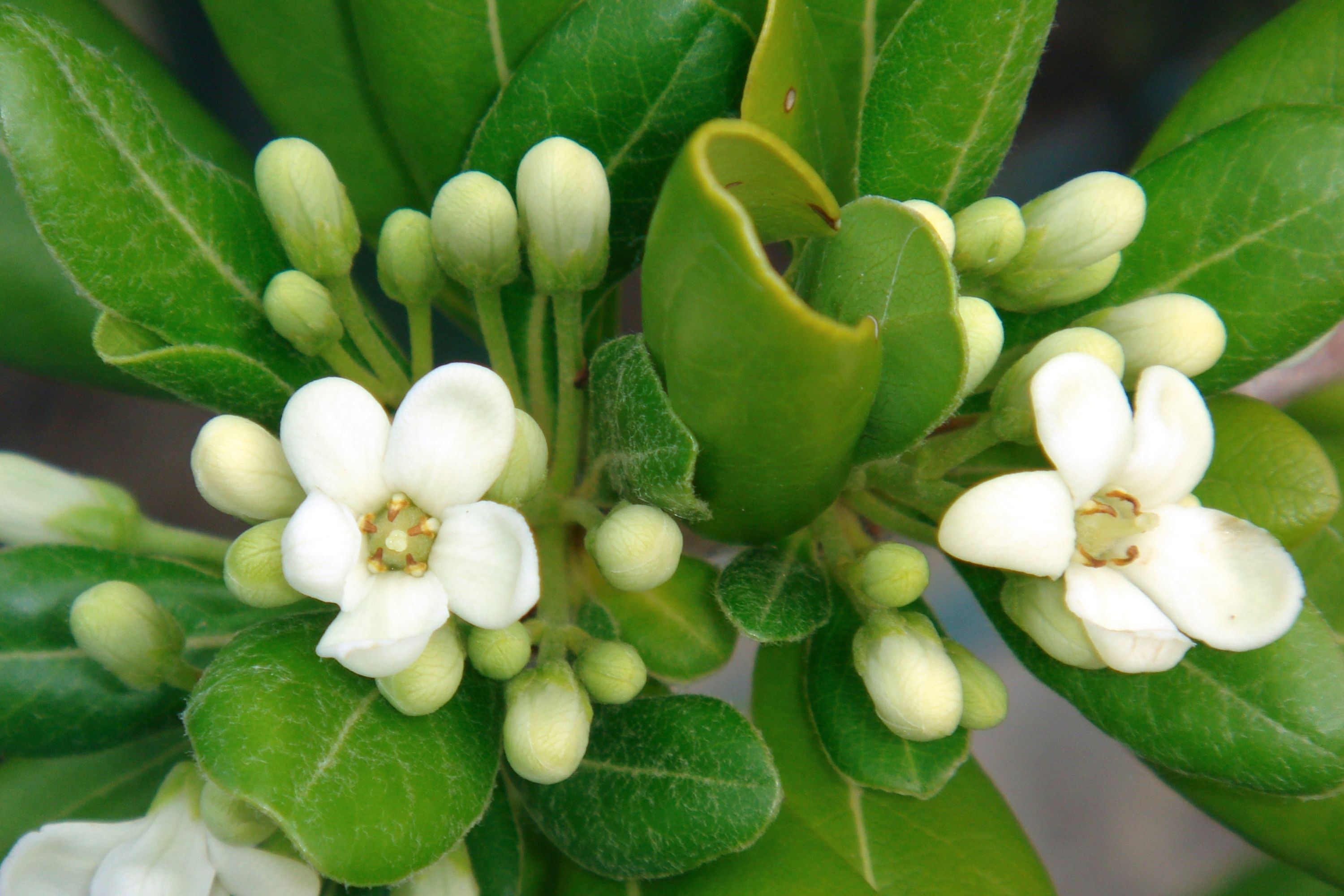Japanese cheesewood
(Pittosporum tobira)

Description
Pittosporum tobira, commonly known as Japanese pittosporum or mock orange, is a species of evergreen shrub or small tree in the family Pittosporaceae. Native to Japan, Korea, and China, it is widely cultivated as an ornamental plant in temperate and subtropical regions around the world. In this article, we will explore the various aspects of Pittosporum tobira, including its botanical characteristics, cultivation, and uses. Taxonomy and Botanical Characteristics Pittosporum tobira was first described by the Dutch botanist Carl Peter Thunberg in 1780. The genus Pittosporum consists of around 200 species of shrubs and trees, many of which are native to Australia and New Zealand. Pittosporum tobira is a slow-growing, evergreen shrub that can reach a height of 6-10 feet and a spread of 5-8 feet. It has a rounded, bushy habit, with glossy, leathery leaves that are dark green and up to 4 inches long. The leaves are arranged in a spiral pattern on the stems and have a distinctive wavy margin. The flowers of Pittosporum tobira are small, creamy white, and fragrant. They are borne in clusters at the ends of the stems from late spring to early summer. The flowers are followed by small, round, woody capsules that contain numerous seeds. The fruit is not particularly showy, but the seed capsules can persist on the plant for several months after they have matured. Cultivation and Propagation Pittosporum tobira is a relatively easy plant to grow and care for, making it a popular choice for gardens and landscapes. It is hardy to USDA zones 8-11, which means it can tolerate temperatures as low as 10°F (-12°C) and can be grown in most parts of the southern United States. In colder climates, it can be grown in containers and brought indoors during the winter. Pittosporum tobira prefers full sun to partial shade and well-draining soil. It is tolerant of a wide range of soil types, from sandy to clayey, but it does not like to be planted in waterlogged soil. It is also tolerant of salt spray and can be used in coastal gardens. Propagation of Pittosporum tobira can be done by seeds, cuttings, or layering. Seeds can be collected from the mature capsules in the fall and planted in the spring. Cuttings can be taken from the new growth in the spring or early summer and rooted in a mixture of sand and peat moss. Layering involves bending a low-hanging stem to the ground, covering it with soil, and waiting for roots to form before severing the stem from the parent plant. Uses Pittosporum tobira is a versatile plant that can be used in a variety of ways in the landscape. Its attractive foliage and fragrant flowers make it a popular choice for hedges, screens, and foundation plantings. It can also be used as a specimen plant or as part of a mixed border. In addition to its ornamental uses, Pittosporum tobira has some practical applications as well. The wood of the plant is hard and dense, making it useful for carving and turning. The bark and leaves contain saponins, which can be used to make soap and shampoo. In traditional medicine, the plant has been used to treat a variety of ailments, including coughs, fever, and skin conditions. In conclusion, Pittosporum tobira is a beautiful and useful plant that deserves a place in any garden or landscape.
Taxonomic tree:







